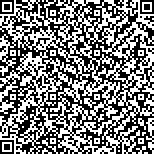靳雨、邢国强、郭志伟、唐清、母其文.重复经颅磁刺激治疗脑卒中后抑郁症效果的Meta分析[J].中华物理医学与康复杂志,2016,38(5):384-393
扫码阅读全文

|
| 重复经颅磁刺激治疗脑卒中后抑郁症效果的Meta分析 |
|
| |
| DOI: |
| 中文关键词: 重复经颅磁刺激 脑卒中 抑郁症 循证医学 |
| 英文关键词: Transcranial magnetic stimulation Stroke Depression |
| 基金项目:国家自然科学基金资助项目(81271559);国家外专局资助项目(20155100056) |
|
| 摘要点击次数: 4643 |
| 全文下载次数: 5630 |
| 中文摘要: |
| 目的 系统评价重复经颅磁刺激(rTMS)对脑卒中后抑郁(PSD)的治疗效果。 方法 计算机检索Embase、PubMed、Cochrane Library、Web of Science、中国知识资源总库、万方数据库、维普中文科技期刊全文数据库中关于rTMS治疗PSD患者的随机对照实验(RCT)。检索时限从建库至2015年6月。由两名研究者按纳入和排除标准筛选文献并提取有效数据,同时进行质量评价。采用RevMan 5.2版统计学软件对最终纳入的文献数据进行统计学分析。 结果 最终纳入24篇RCT论文(共有患者1658例)。Meta分析结果显示, rTMS治疗组可有效地改善PSD患者的抑郁情绪,总效应值为-1.36[95% CI,(-1.6,-1.12),P<0.05],抗抑郁的有效率为85%。在抗抑郁治疗的同时,rTMS组更有利于患者神经缺损功能的恢复,总效应值为-0.82[95%CI,(-1.2, -0.44), P<0.05]。亚组分析结果显示,按刺激频率和部位分为高频左侧额叶背外侧区(10Hz)、低频右侧额叶背外侧(1Hz)和低频双侧前额叶(0.5Hz和1Hz)3组,其平均效应值分别为-1.44[95%CI,(-1.68, -1.2), P<0.05],-1.08[95%CI,(-1.82, -0.34), P<0.05],-1.39[95%CI,(-1.91, -0.87), P<0.05],但组间异质性分析显示,组间差异无统计学意义(P>0.05)。按脑卒中不同时间段分组分析,脑卒中急性和亚急性期出现抑郁的效应量为-1.45[95%CI,(-1.84, -1.06), P<0.05],慢性期出现抑郁的效应量为-1.40[95%CI,(-1.69,-1.1), P<0.05],组间异质性分析显示,差异亦无统计学意义(P>0.05)。纳入研究均未报道rTMS刺激期间出现任何明显副反应。 结论 rTMS对PSD患者的情绪有一定的积极作用。受纳入研究质量限制,上述结论尚有赖于进一步开展更多大样本、多中心、高质量的RCT研究加以验证。 |
| 英文摘要: |
| Objective To assess the effectiveness of repeated trans-cranial magnetic stimulation (rTMS) in relieving post-stroke depression (PSD). Methods PubMed, Embase, the Cochrane library, Web of Science, CNKI, WANFANG, and VIP were searched for reports of randomized, controlled trials of rTMS treatment of PSD published before June 2015. Crude standardized mean differences (SMDs) and odds ratios with 95% confidence intervals (CIs) were calculated for depression intensity and effectiveness rate after treatment using random or fixed effects models. Results Twenty-four studies involving 856 rTMS-treated patients and 802 control patients were included in the meta-analysis. The results showed that compared with the control group, PSD patients showed significant reductions in depression after rTMS treatment (SMD=-1.36; 95% CI -1.6 to -1.12; P≤0.05). The total effectiveness rate in the treated group was 85% with a reduction in NIHSS score (SMD=-0.82; 95% CI -1.2 to -0.44; P≤0.05). Subgroup analysis showed that neither the frequency of rTMS stimulation, the site stimulated, nor time after stroke had a significant influence on the effectiveness of rTMS. Additionally, a few studies reported adverse reactions after rTMS. Conclusion rTMS appears to be a safe and effective therapy for PSD. Further well-controlled trials may elucidate the mechanism underlying the placebo effects of the sham rTMS observed among PSD patients. |
|
查看全文
查看/发表评论 下载PDF阅读器 |
| 关闭 |
|
|
|